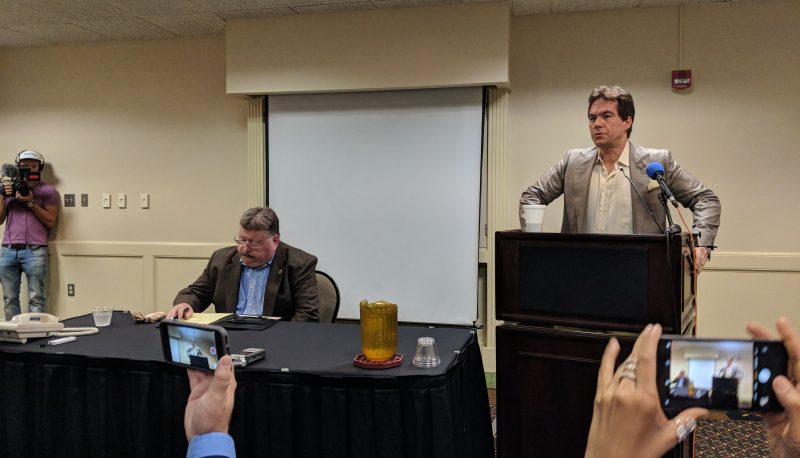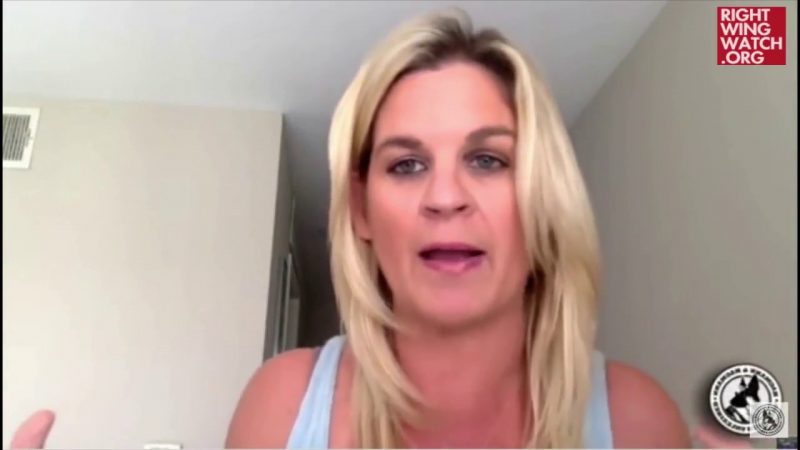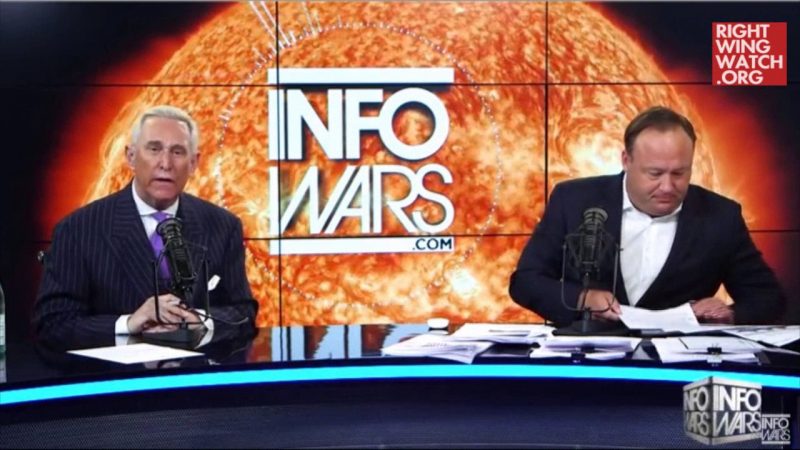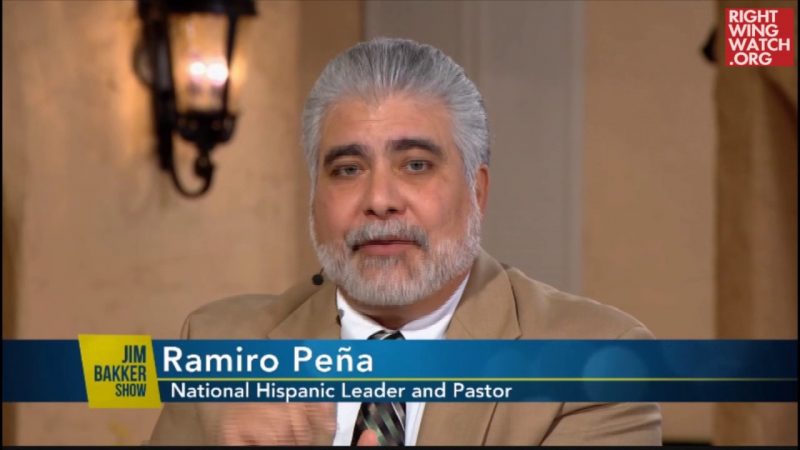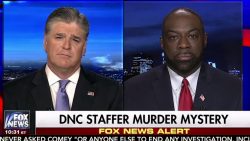Right-wing activist and lobbyist Jack Burkman held a press event this afternoon in a conference room at a Holiday Inn one Metro stop beyond Washington, where he promised he would produce an eyewitness who would reveal the names of two government agents who he says murdered Democratic National Committee staffer Seth Rich two years ago. Instead, all Burkman managed to do was waste 90 minutes of reporters’ time.
The press conference was scheduled to commemorate the two-year anniversary of Rich’s murder. Local authorities and the FBI believe that Rich was killed in a botched burglary, but have yet to identify who murdered him, and Rich worked at the Democratic National Committee as a staffer before he was killed—perfect fuel for the right-wing fever swamps online to begin cooking up elaborate narratives and conspiracy theories exploiting the tragedy for ideological gain. The outlandish claims and theories about Rich’s murder even made it as high as Fox News, which is now being sued for spreading false assertions. Throughout it all, Burkman has been at the center of the so-called “investigation” into who killed Rich that fateful night, despite the Rich family’s repeated pleas for him to stop.
Today’s press conference, held in collaboration with America First Media Group’s Matt Couch, promised to produce “two previously unknown sources who may be key to unlocking the mystery” of Rich’s murder. Instead, reporters entered the conference room to find an off-white speakerphone from years past resting on a table and a promise to hear just one of the promised sources via speakerphone. After a break that happened just a few minutes after the conference started, Burkman and his cohort struggled to route their source’s call to the phone on the table. Ultimately, reporters were forced to huddle around an iPhone set to speakerphone to hear from “Luke,” a moniker given to supposedly protect the identity of Burkman’s witness.
The famous phone the witness will call in on. But alas — the phone call keeps bouncing back to the Holiday Inn front desk! Organizers have left to sort it out. pic.twitter.com/8Q4N7KjcXb
— Will Sommer (@willsommer) July 10, 2018
Burkman explained that he had contemplated bringing his source to the press conference in a mask, or perhaps with a bag over his head, to conceal his identity, but that his source ultimately felt the safest speaking to reporters over the phone. Retired NYPD detective Frank Whalen attempted to reassure the small fleet of reporters that the identity of the witness would eventually be revealed, but not at the time of the press conference.
Jason Goodman streamed the press conference on his show “Crowdsource the Truth,” during which he was joined by Infowars Washington bureau chief Jerome Corsi via Skype. During inactive parts of the press conference, Goodman’s conversation with Corsi filled the room. At one point, Goodman told Corsi that he believed Rich was actually still alive, garnering laughter from a handful of reporters (myself included).
After a brief intro, Burkman and Whalen turned the floor over to “Luke,” who Burkman repeatedly coached throughout the call. “Luke” let out numerous sighs while he recounted claims that he had witnessed two government agents—one working at the Drug Enforcement Administration and another working at the Bureau of Alcohol, Tobacco, Firearms and Explosives—and one civilian bragging about murdering Rich and getting away with it. He went on to rattle off conspiracy theory after conspiracy theory implicating Wikileaks, hacked emails, and Rod Rosenstein, but also surprisingly pushed back against other prominent conspiracy theories including the QAnon movement and the idea that the DNC had hired assassins to kill Rich.
But the mood in the room quickly soured when journalists began applying light pressure to the alleged witness testimony. Burkman, Whalen, and “Luke” floundered when reporters asked the most obvious question of the press conference: “Why should we believe you?”
Throughout the press conference, “Luke” made numerous assertions to try to reassure reporters that he was a credible source. He said he had been administered a polygraph test by the Secret Service after he submitted information to the House Intelligence Committee (Secret Service does not do this service for Congress), claimed to have military experience working in domestic and foreign intelligence (he provided no way to verify his service), and promised he would eventually reveal his identity when he was able to stop hiding from the “nasty” agents he claimed were “geographically close” to him.
But reporters in the room—even those largely sympathetic to conspiracy theories about Rich’s murder—left unconvinced. By the end, it seemed to be that the only person who awarded the claims any benefit of the doubt was a woman who was attending the press conference on behalf of a Facebook group dedicated to researching and piecing together information about Rich’s murder.
At one point, a Washington Post reporter was trying to reason with the witness, who said he had not taken his claims that two government agents killed Rich to law enforcement, and asked him why he thought having a public call with the press would actually protect him from the agents he supposedly feared. Eventually, the reporter asked “Luke” if he was using a voice scrambler. There was some pause.
“Uh, would it matter?” the voice on the phone said.
Burkman claimed at the beginning of the press conference that he had approximately $400,000 in reward money available for credible tips that can help solve the Rich murder, so I repeatedly asked Burkman and “Luke” why they didn’t use those funds to publicly name the agents they believed murdered Rich and hire security to protect “Luke” until threats are neutralized. Neither men would answer my question.
It had been announced in advance that following the press conference there would be a candlelight march to the spot where Rich was murdered, which would have required participants to walk about an hour and a half in 93 degree heat. But we’re skeptical given the fact that the press release described the Washington neighborhood of Bloomingdale to be “just outside of Washington D.C.”





